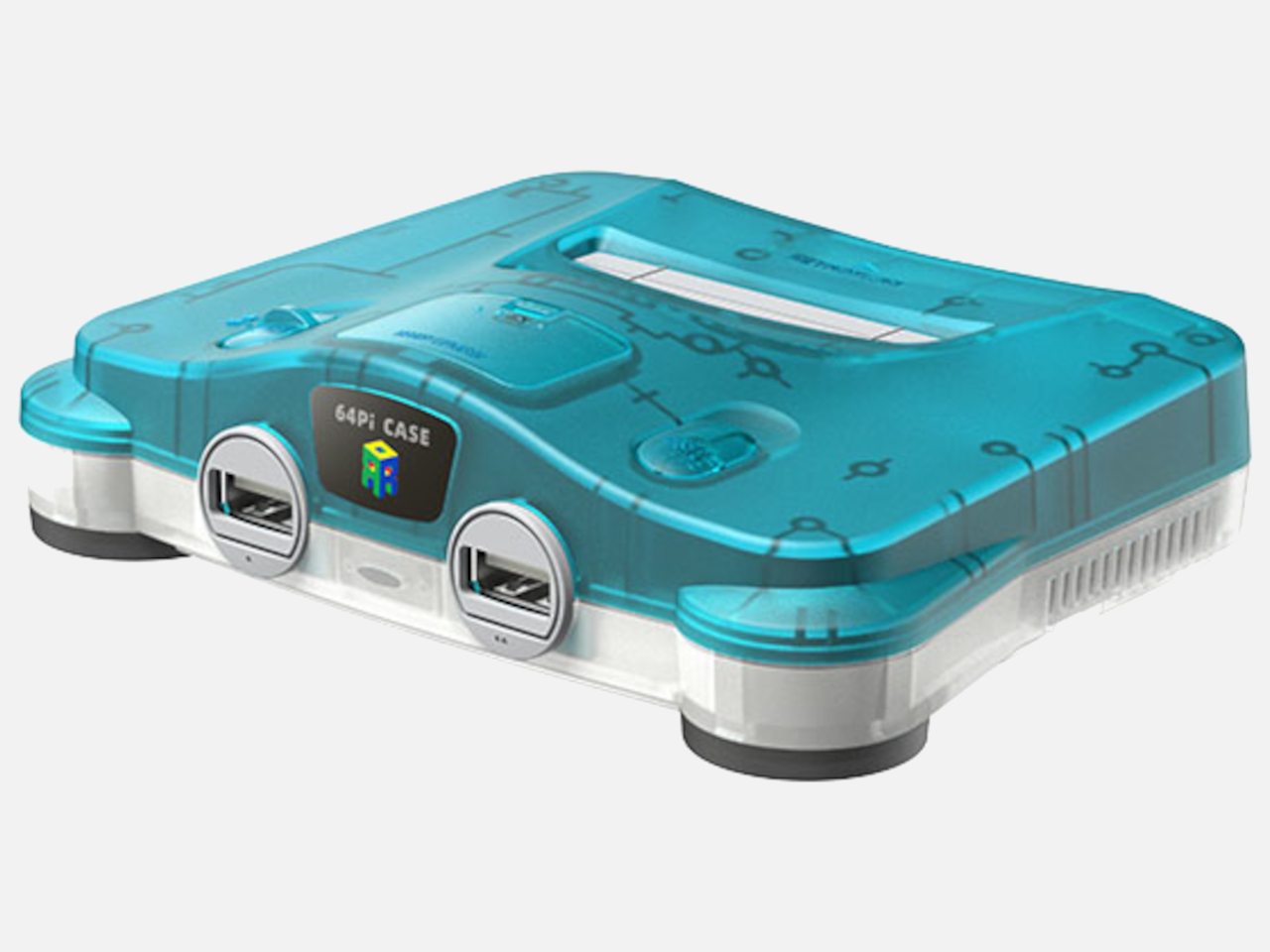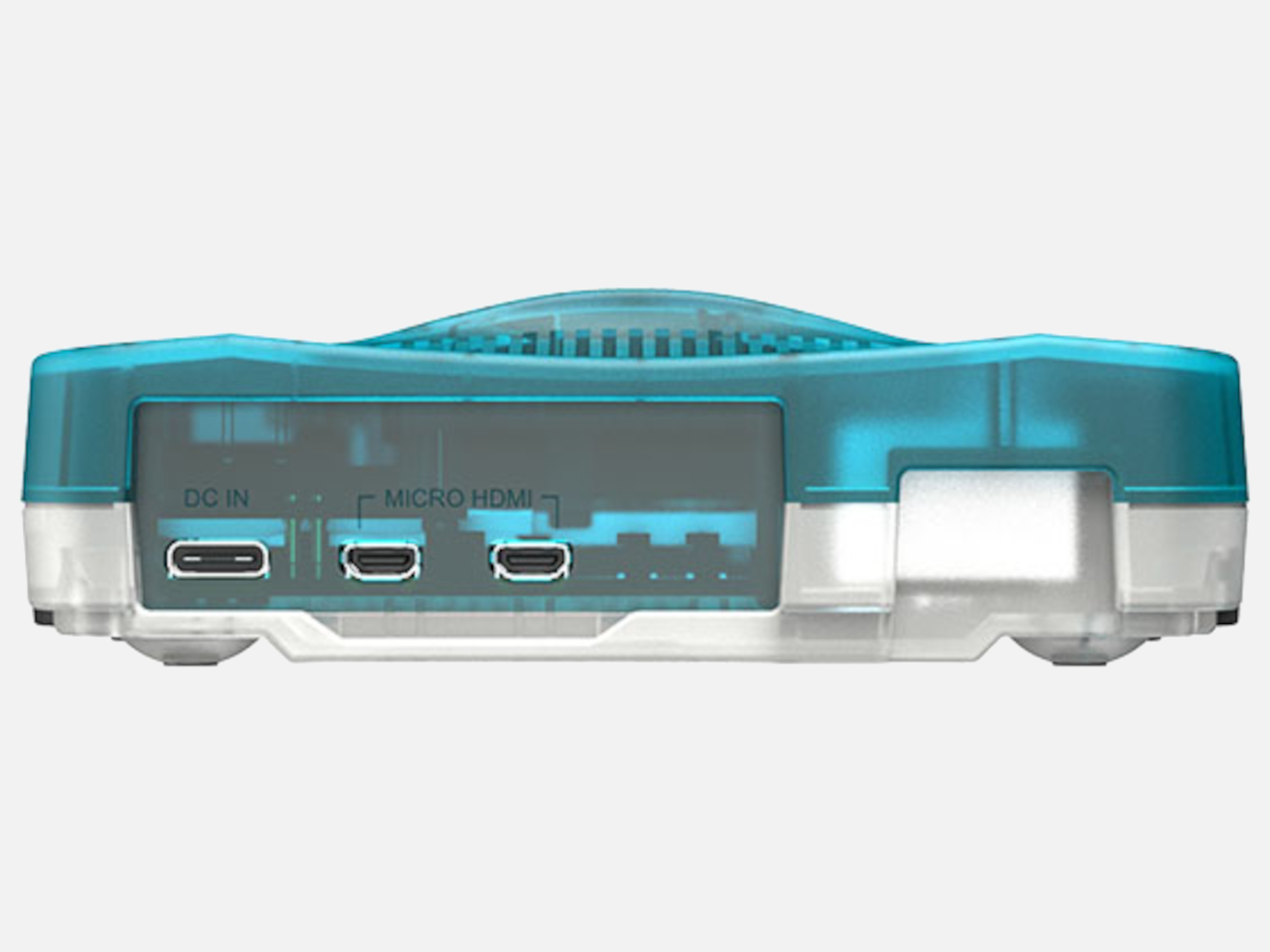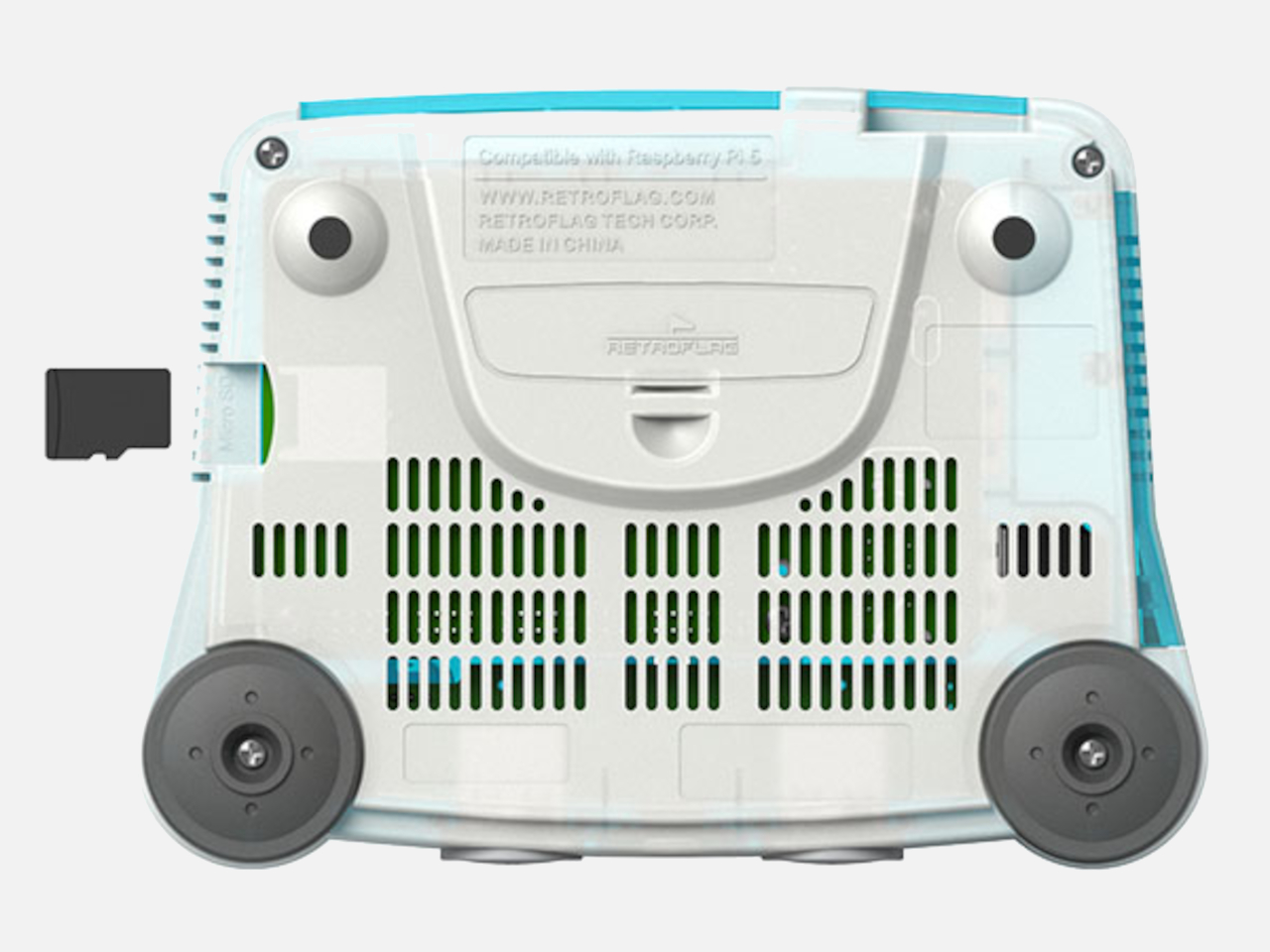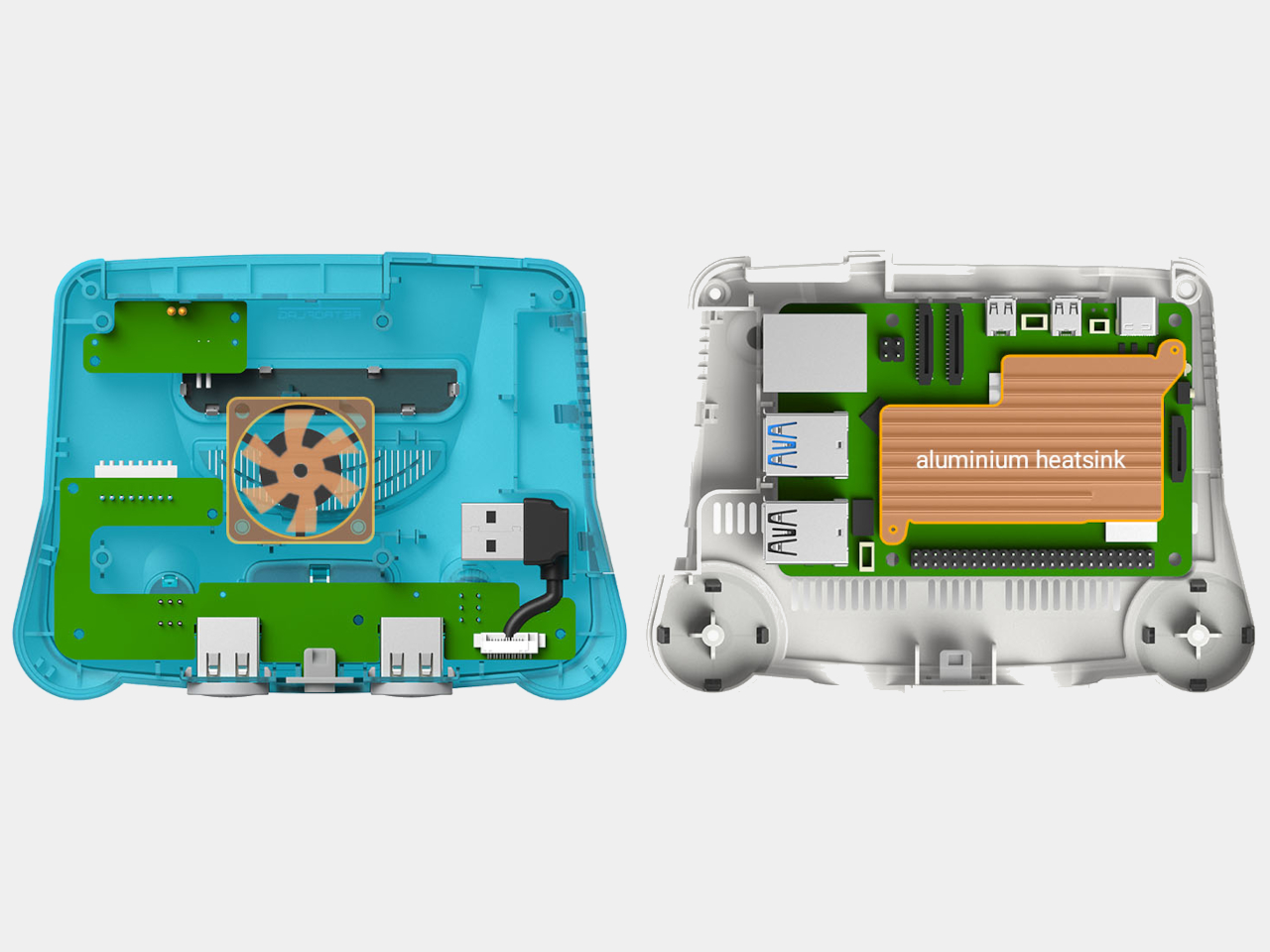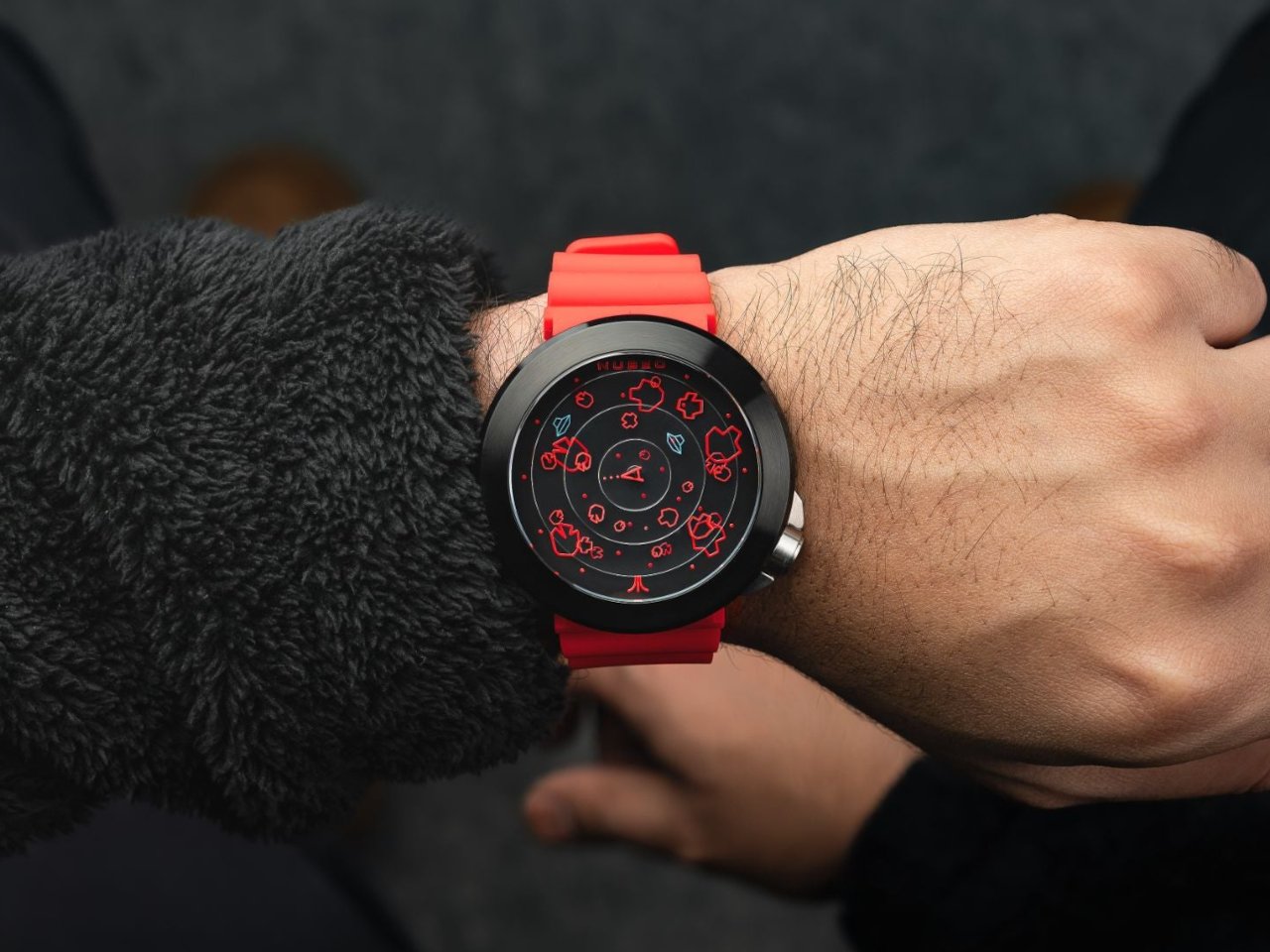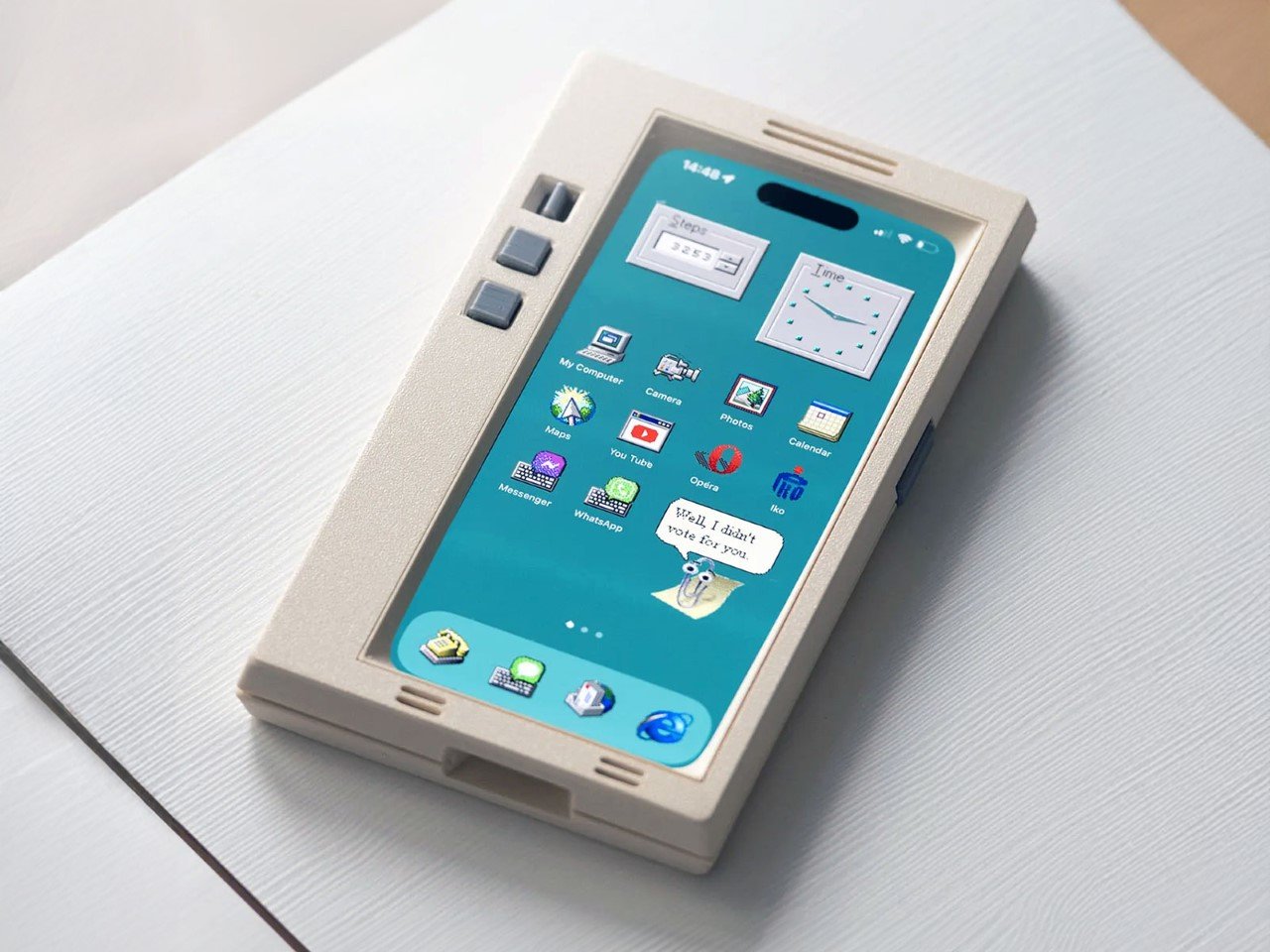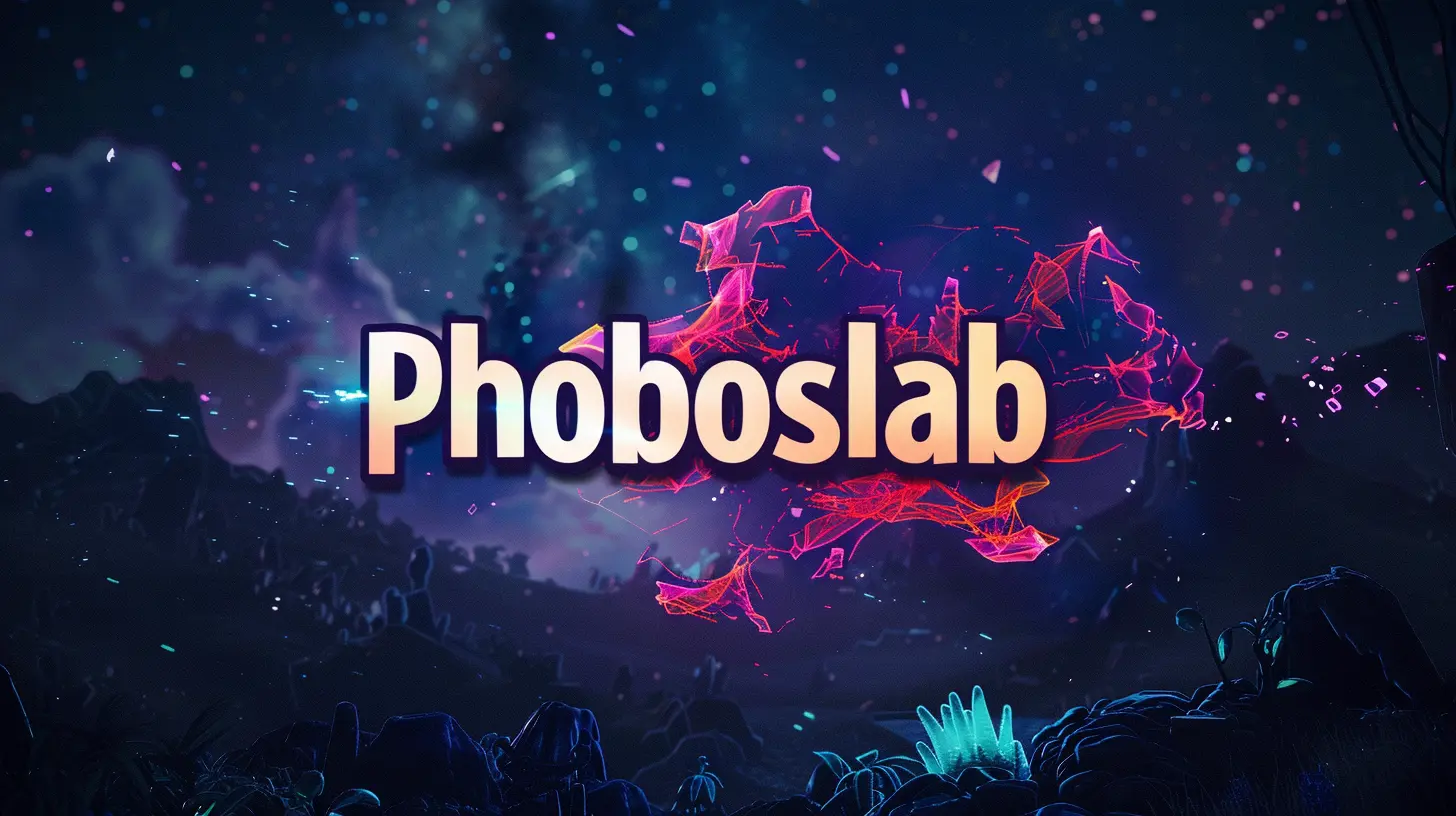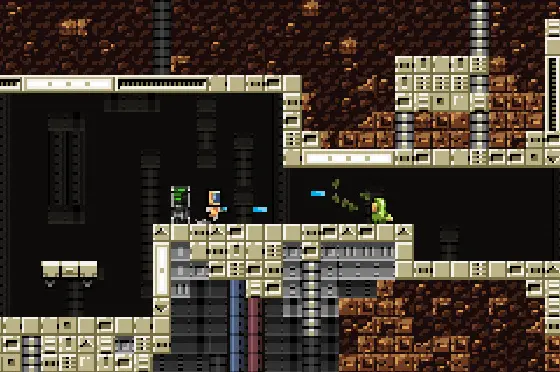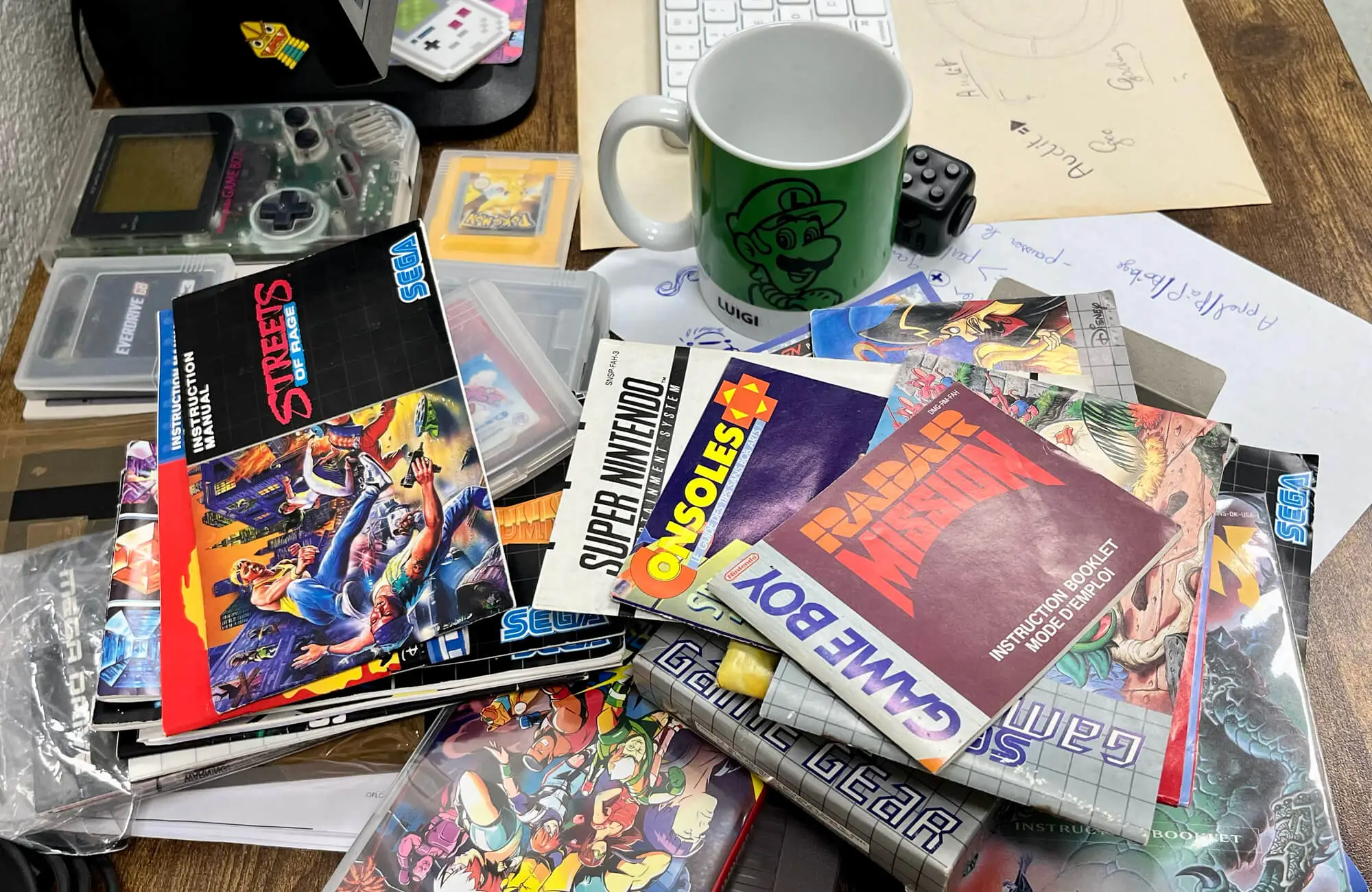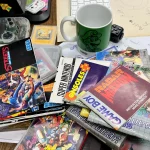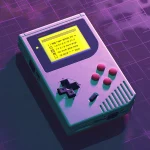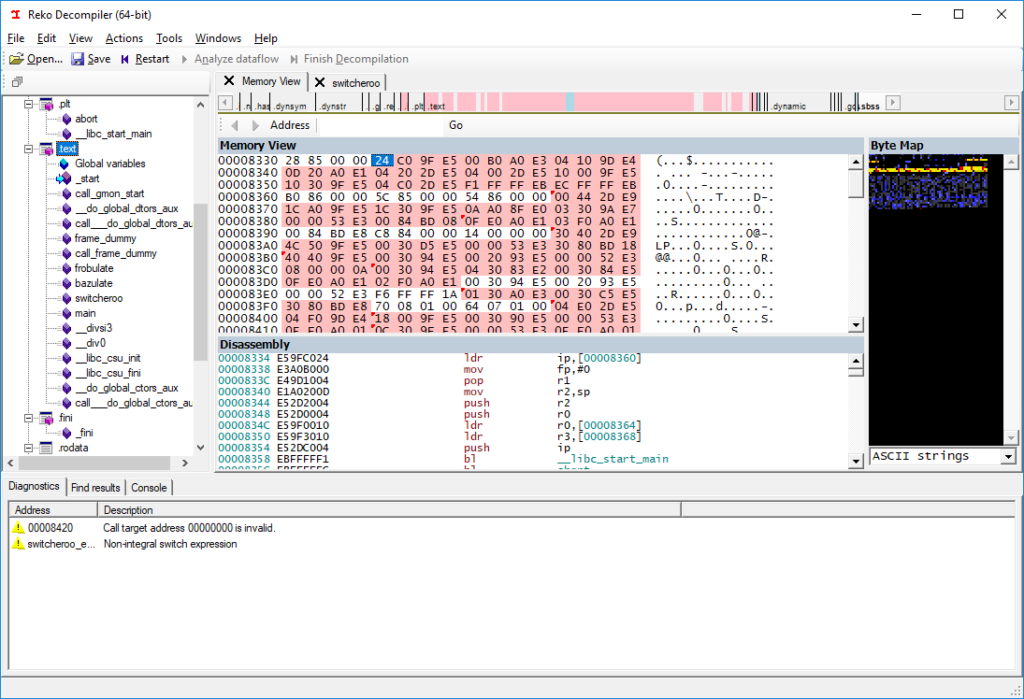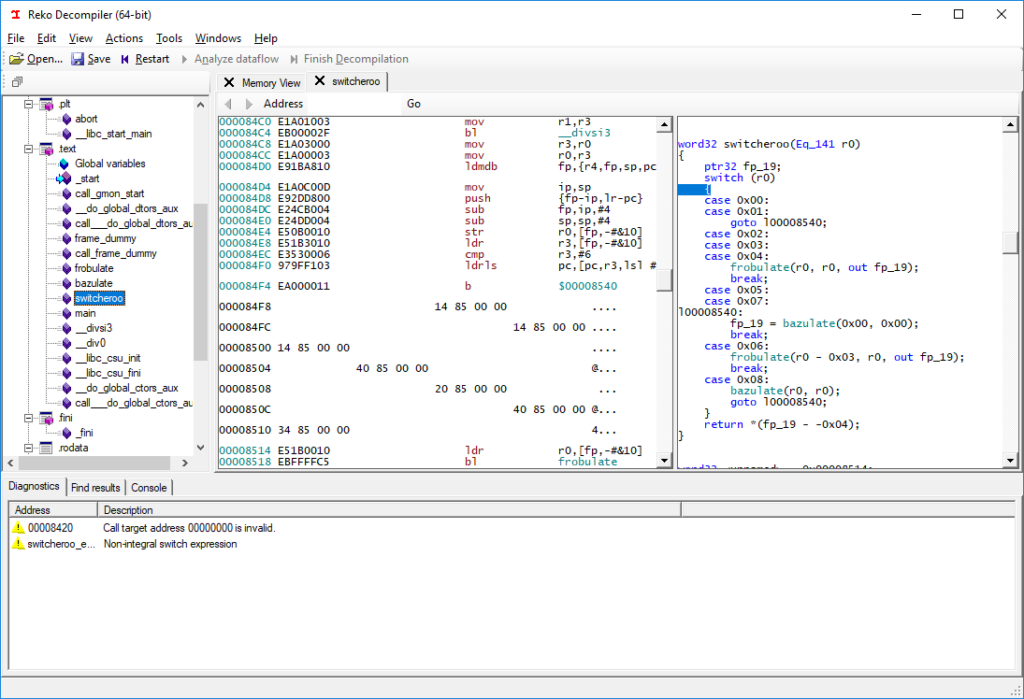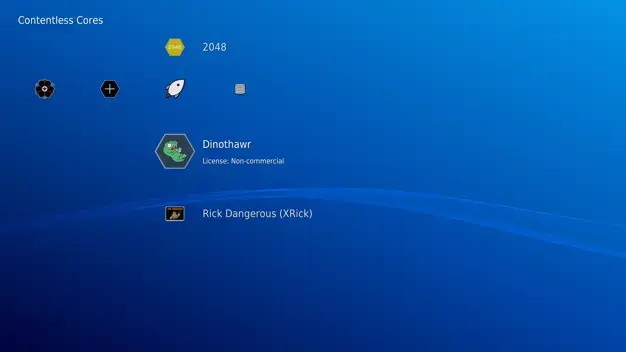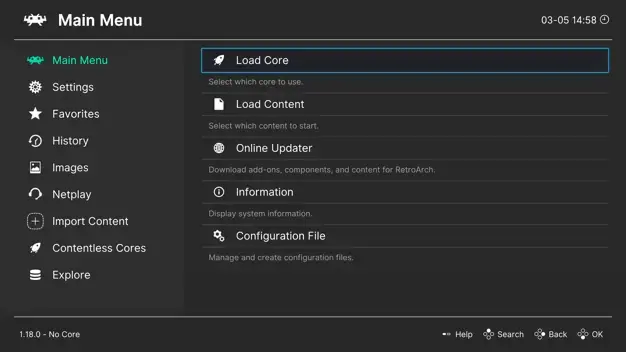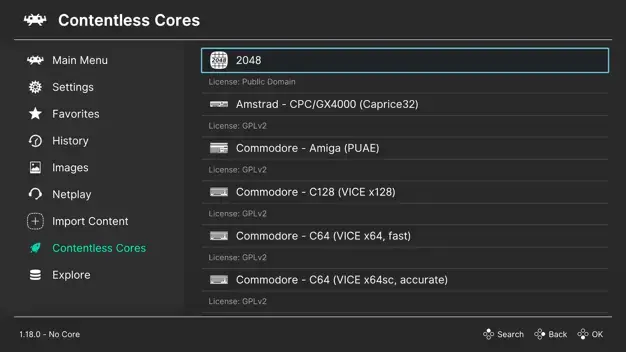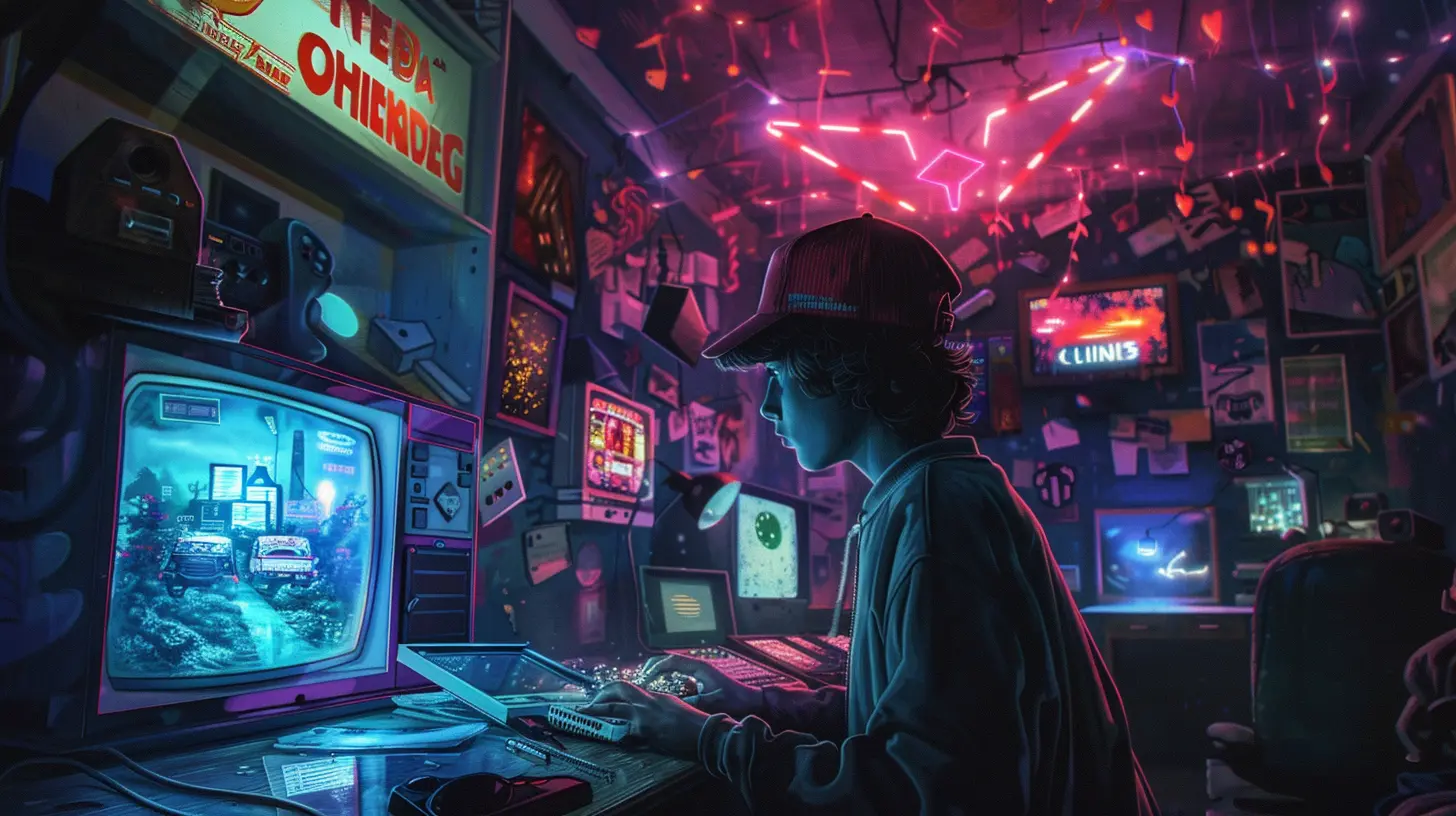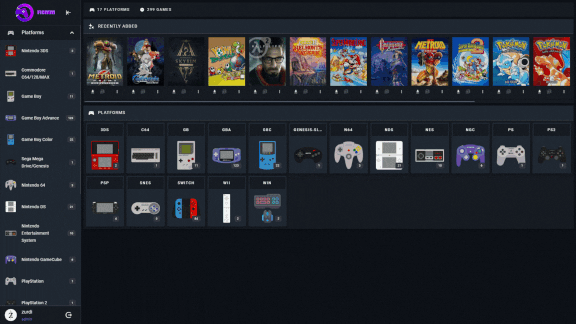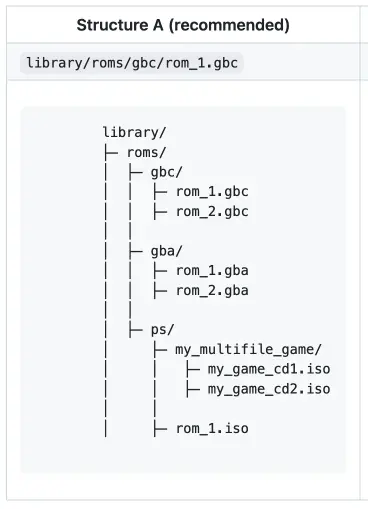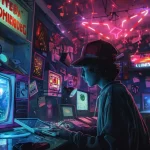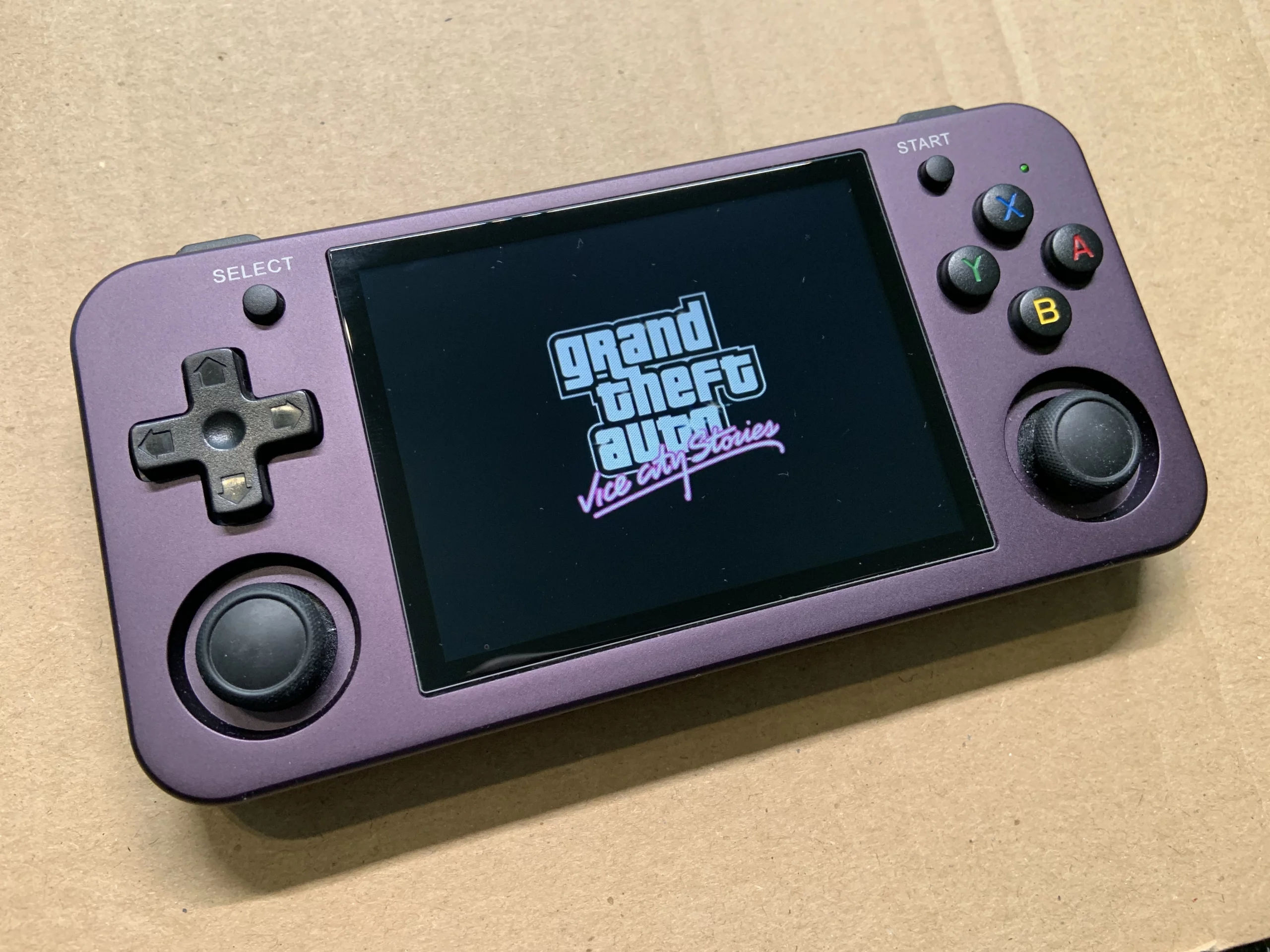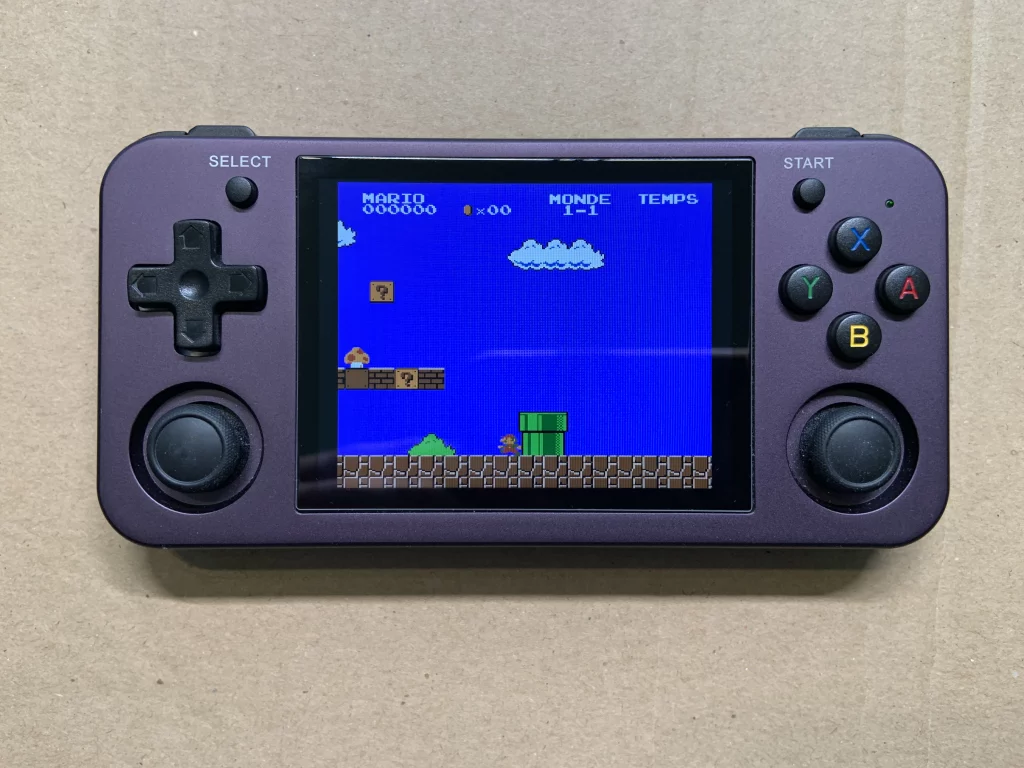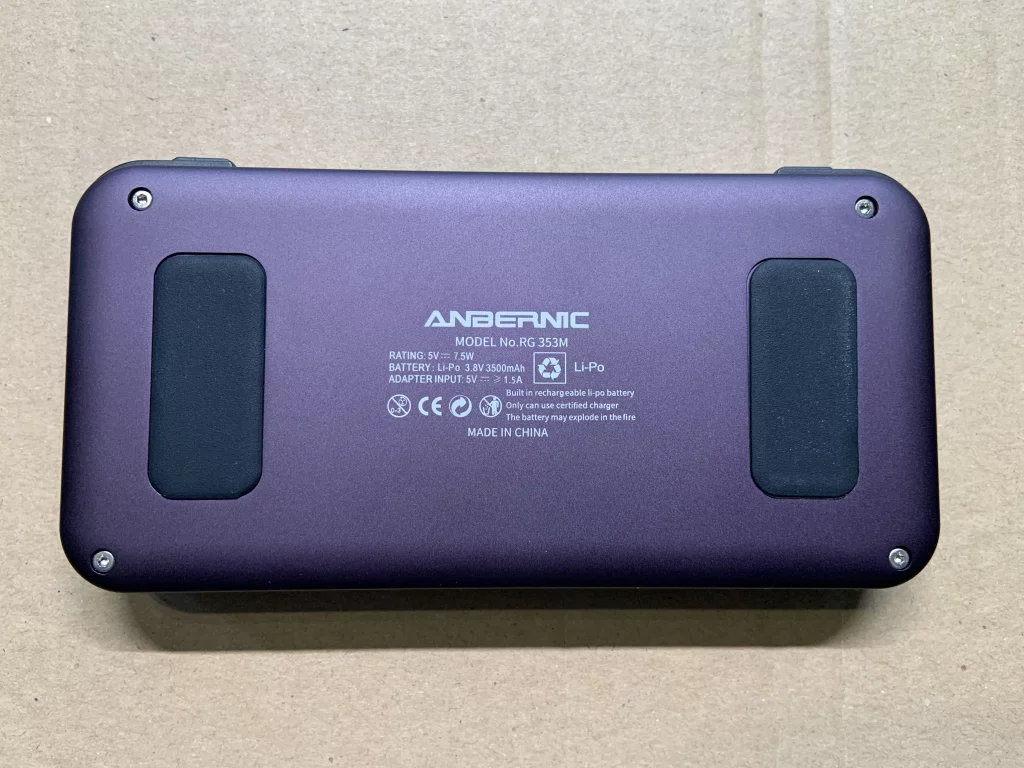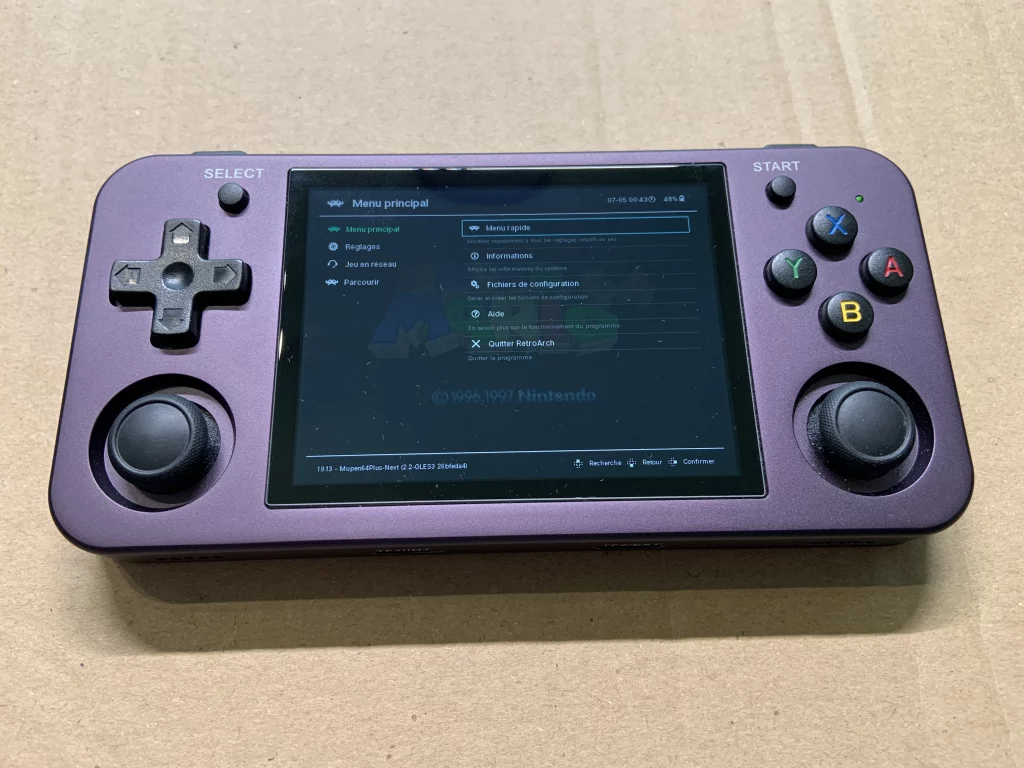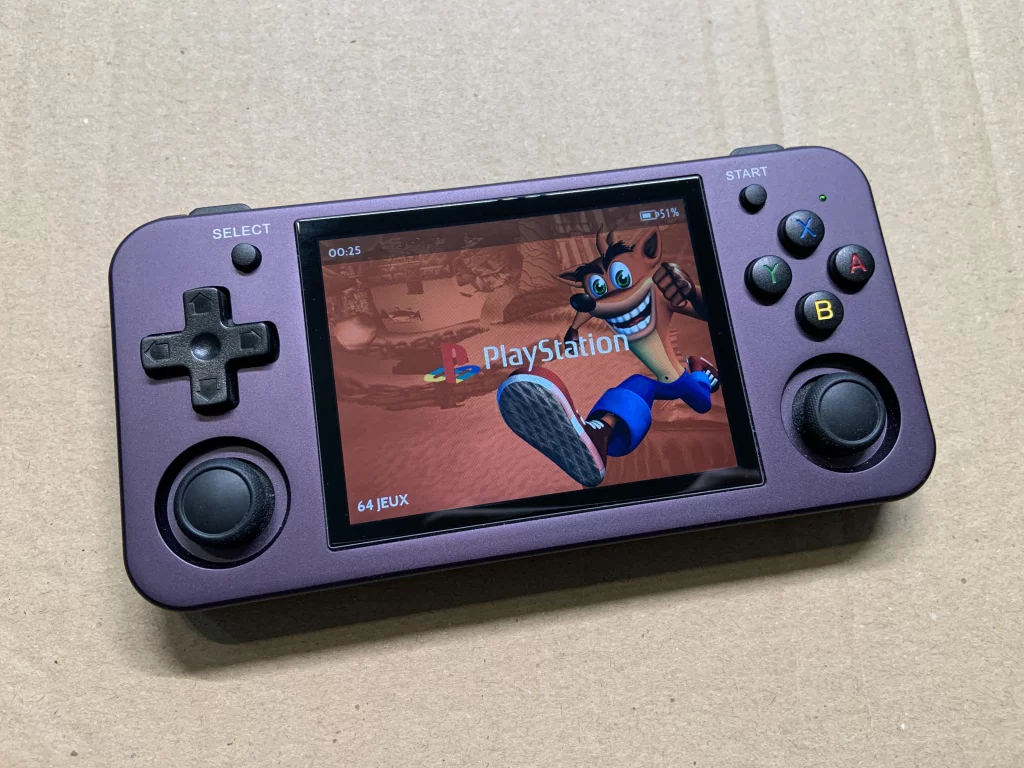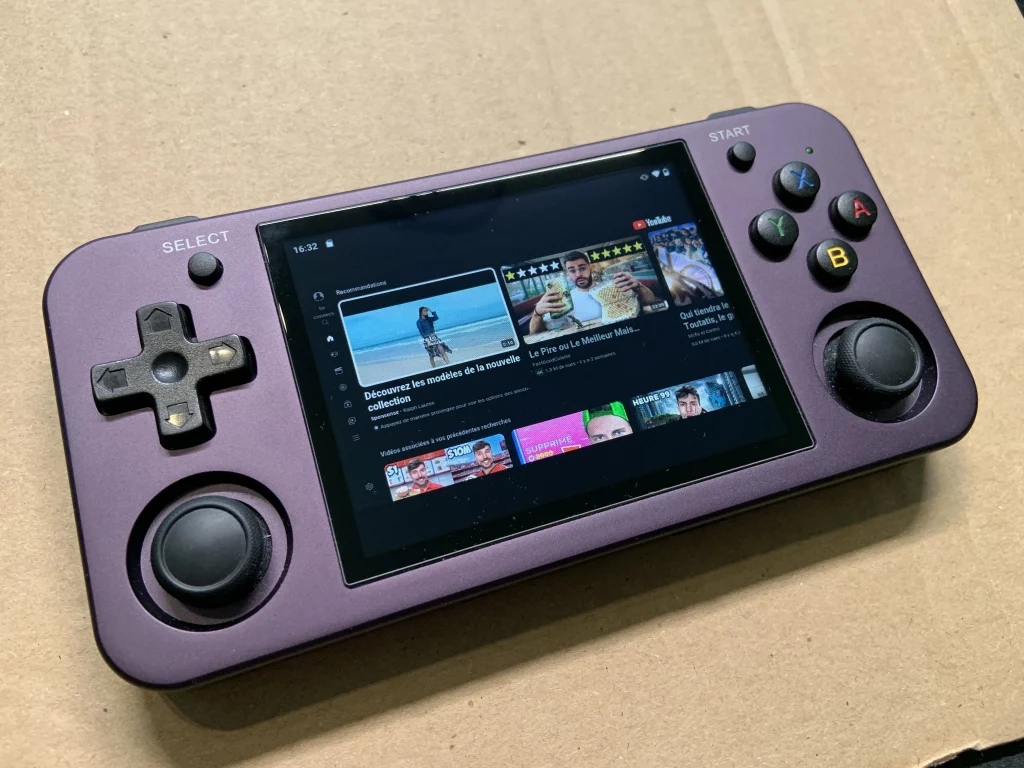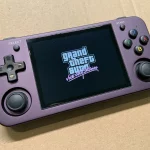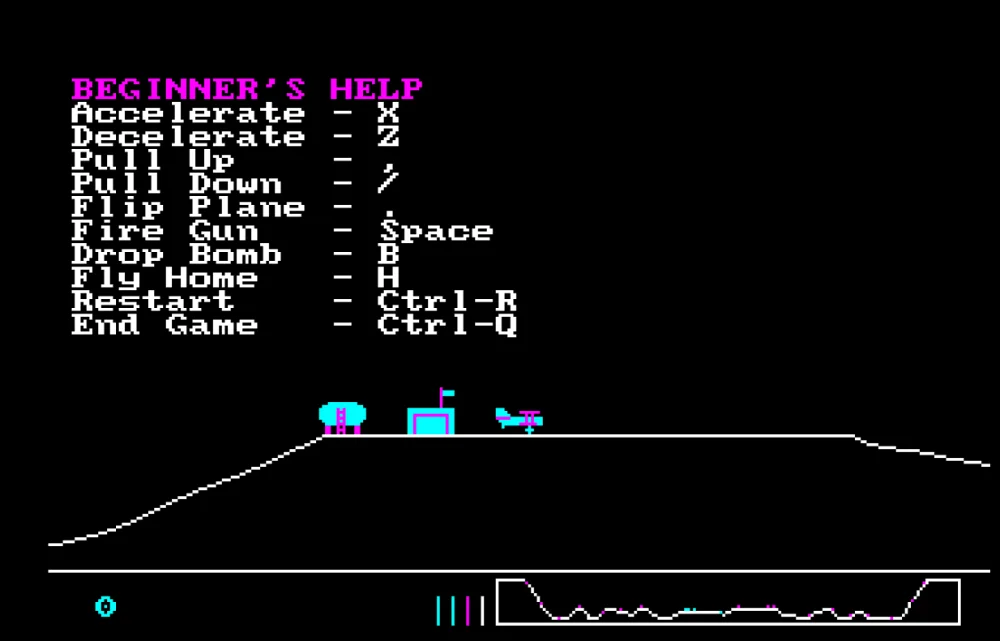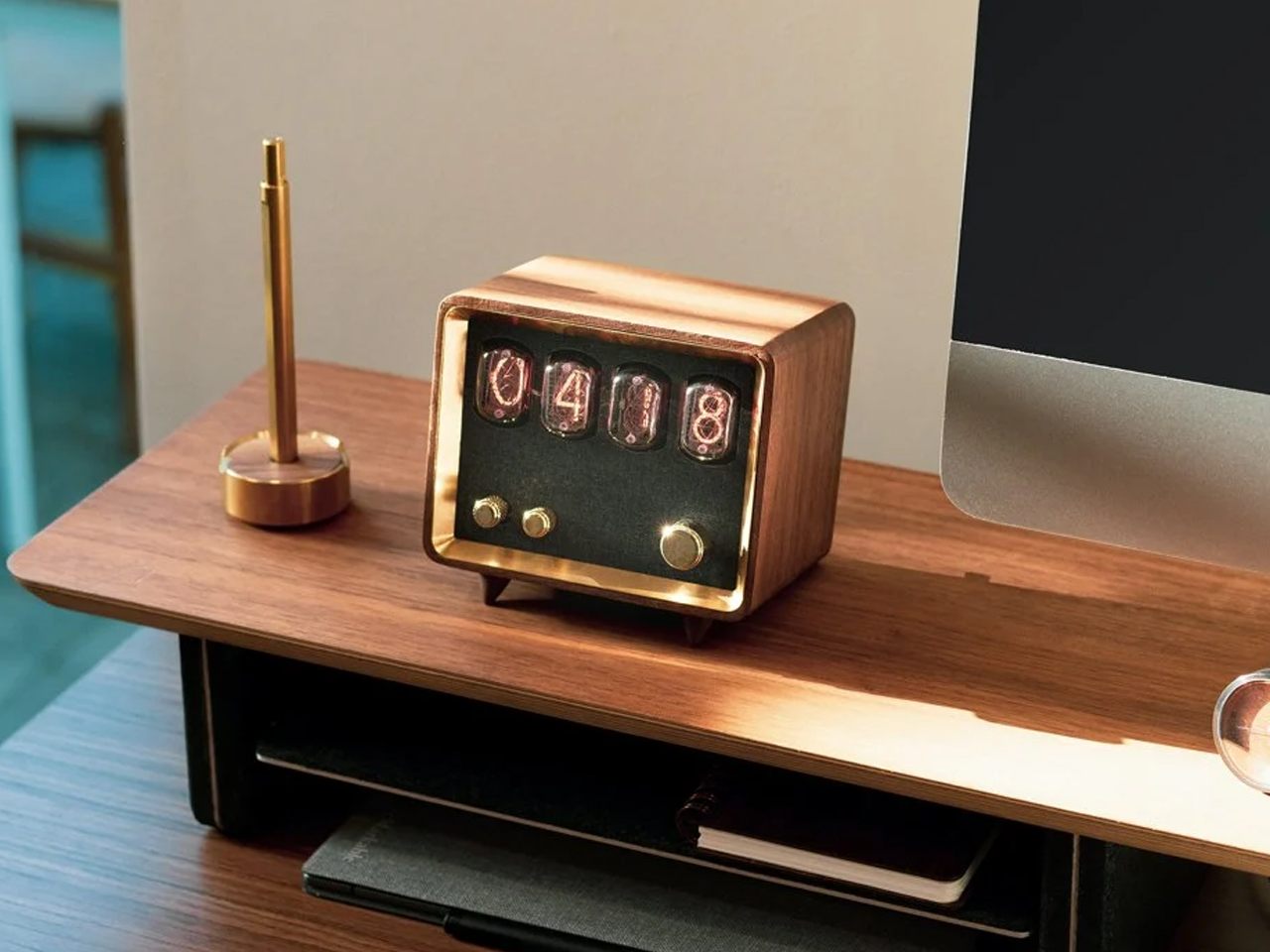
As we start with a new era, Generation Alpha, a millennial such as me seeks comfort in the nostalgic touch of retro design. Retro for me is the era of rebellion, polka prints, Andy Warhol and the comfort of knobs and tactile interfaces over touch screens. Retro design effortlessly blends nostalgic elements with modern aesthetics, creating a refreshing yet familiar atmosphere. Inspired by vintage styles from the 1950s to the 1980s, it fosters comfort and a connection to history.
By using iconic shapes, vibrant colors, and distinctive materials, retro design reconnects us with cultural references and pays homage to the past. This approach not only produces timeless pieces that resonate across generations but also enriches our contemporary experience. Let’s dive into the elements of retro design we can use to add to touch of nostalgia to our modern product design and some examples that show how brands are incorporating this trend seamlessly into their work.
1. Bold Color Palette
Retro design thrives on the use of bold colors to evoke a sense of nostalgia and vibrancy. Drawing inspiration from the vivid palettes of the 1950s to the 1980s, it incorporates hues like mustard yellow, teal, burnt orange, and avocado green. These striking colors are often used in combination to create eye-catching contrasts that capture attention and energize spaces. Whether applied to furniture, textiles, or accessories, bold colors in retro design serve to highlight iconic shapes and patterns, making each piece a statement of personality and style. This dynamic use of color bridges past and present, creating timeless appeal.


The Analogue Pocket Classic brings a vibrant twist to retro gaming with its striking palette of bold colors, including indigo, red, green, blue, yellow, pink, orange, and silver, all meticulously color-matched to the original Game Boy Color. This sleek product has a playful aesthetic that appeals to gamers of all ages, making it a standout piece in any collection. Perfectly blending vintage charm with contemporary flair, the Classic edition is a colorful celebration of gaming history.


Serhan Yenilmez’s “Cat Eye” glasses draw inspiration from the iconic cat-shaped ‘librarian’ frames of the ’50s and ’60s. Featuring added layers for a bold, chunky look, these glasses blend classic elegance with modern sophistication through details like leather pads and mix-and-match materials. All parts of the glasses are designed to be detachable, allowing for customizable styles to suit the wearer’s preferences, imparting a distinct appearance. Go from sleek to chunky, to attention grabbing prints to a minimal tone – it’s all upto your customization for that day.
2. Large Prints
The retro era is vividly remembered for its bold prints, florals, and striking motifs, which became hallmarks of the time. These design elements were ubiquitous, gracing everything from home interiors to fashion. Bold prints, often featuring geometric shapes and vibrant colors, captured the spirit of innovation and optimism.

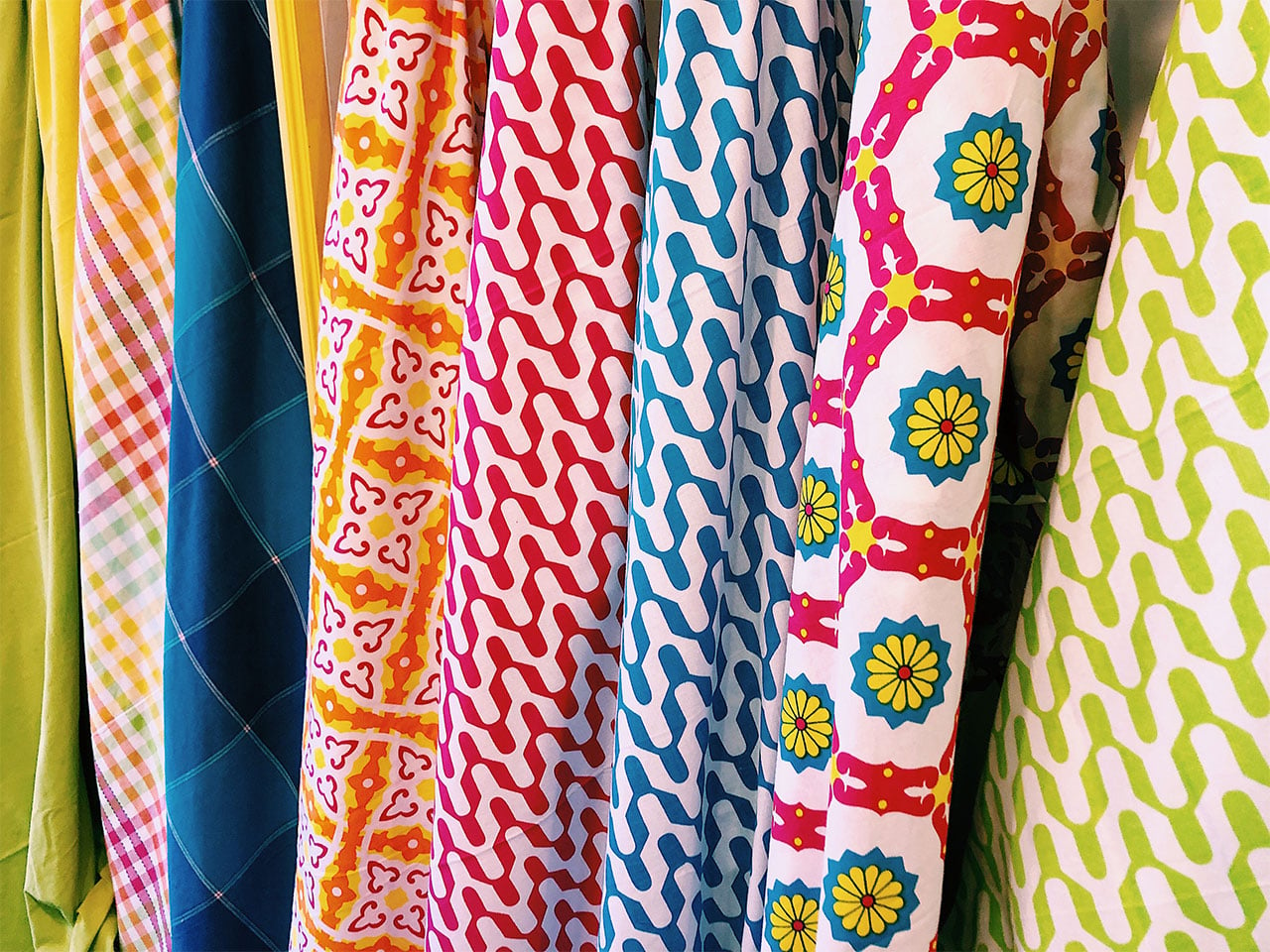
Florals, with their oversized blooms and lush patterns, added a touch of nature-inspired elegance and whimsy. Striking motifs, such as paisleys and abstract designs, reflected the era’s experimental and free-spirited ethos. Together, these elements created a visually dynamic aesthetic that was both expressive and timeless, leaving a lasting impact on design history.
During the mid-20th century, such designs adorned everything from wallpaper and upholstery to fashion and accessories, infusing spaces and wardrobes with a lively, playful energy. The use of large prints in retro design not only adds a touch of whimsy but also emphasizes the era’s experimental spirit. These bold patterns continue to inspire modern design, blending past influences with contemporary tastes. Big geometric patterns provide a sense of familiarity and nostalgia. The combination of bold colors and geometric prints is essential to retro design, making a vibrant statement that speaks volumes.
3. Iconic Motifs
Iconic motifs like polka dots played a significant role in defining retro design, adding a playful and timeless charm to various elements of style. Originating in the mid-20th century, polka dots became synonymous with the era’s fashion, appearing on dresses, accessories, and home decor. Their simple yet bold pattern, often featuring evenly spaced dots on contrasting backgrounds, created a lively visual appeal that resonated with the era’s spirit of fun and creativity. Polka dots brought a sense of whimsy and lightheartedness, making them a favorite choice for those looking to infuse their spaces and wardrobes with a touch of retro flair.

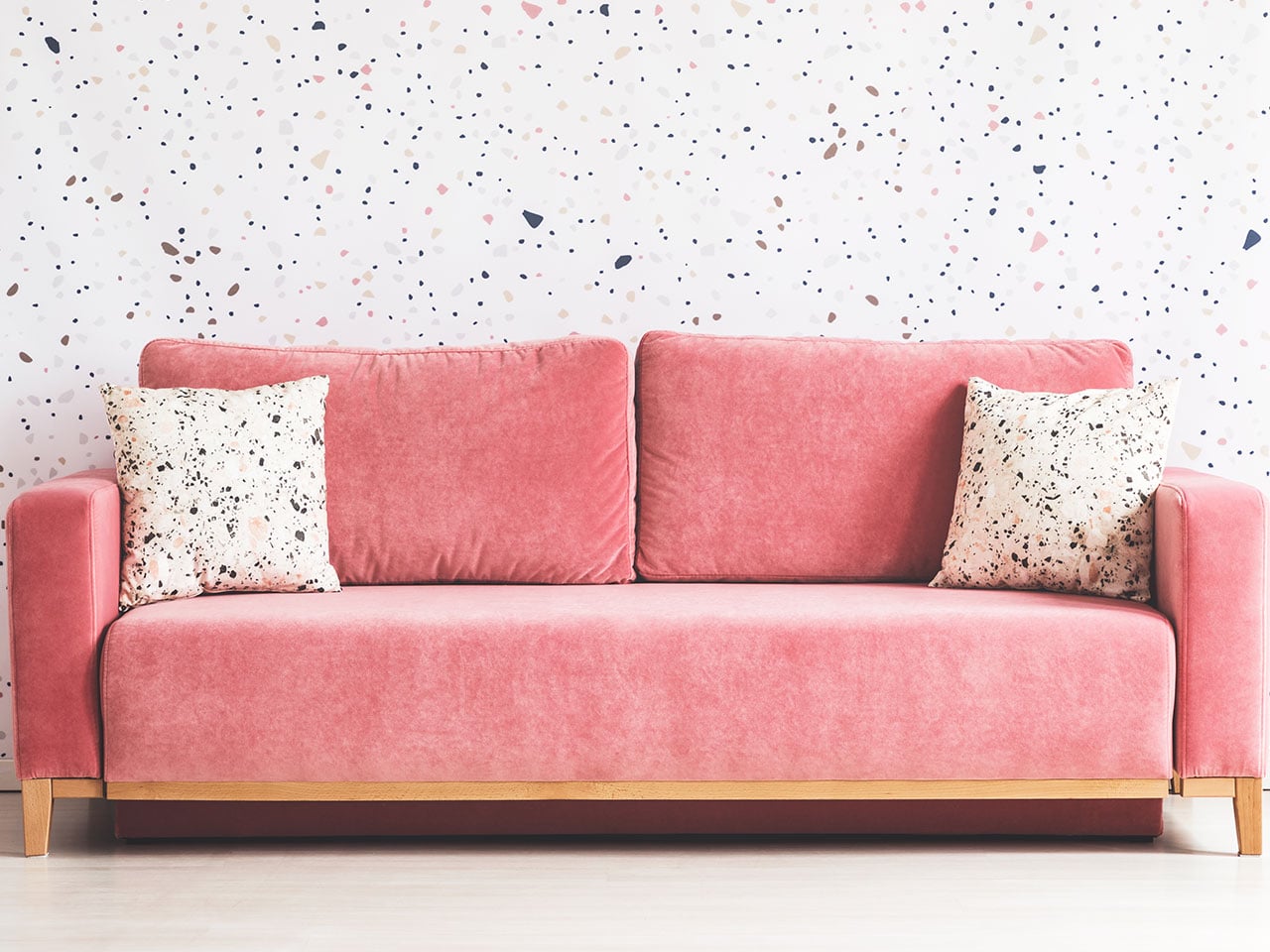
The use of bold, large polka dot prints in vibrant colors to upholster this armchair infuses it with old-world charm and nostalgia. It is characterized by evenly spaced, small, medium, or large circular shapes placed on a contrasting background to make them stand out. This striking contrast enhances its visual appeal and evokes a sense of timeless elegance. Whether polka dots are used in clothing, accessories, or home decor, their simple yet bold pattern infuses a sense of vintage charm and nostalgia.
The polka print of this sofa chair is a statement piece, with polka’s ruling the retro era. The polka also brings to mind iconic designers like Yayoi Kusama who have elevated the use of this humble pattern to a whole new level, amplifying its cult status. Adding such a print to your room makes it a eye-catcher and a discussion starter for fellow retro-lovers.
4. Classic Typography
Typography during the retro era was characterized by bold, expressive fonts that mirrored the dynamic cultural shifts of the time. From the elegant serifs of the 1950s to the psychedelic scripts of the 1960s and the chunky, geometric typefaces of the 1970s, each style reflected the prevailing aesthetic trends and societal mood. Retro typography was not just functional but also an art form, used extensively in advertising, posters, and packaging to capture attention and convey messages with flair. Its impact is enduring, as these distinctive fonts continue to influence modern design even today.


The Semetor K8 CD player captures the charm of retro design with its playful aesthetic, featuring classic typewriter-inspired fonts on its translucent buttons. This adorable player pays homage to 1950s European appliances, boasting an open top that lets you watch the CD spin, reminiscent of vinyl on a gramophone. It combines vintage style with modern features, including Bluetooth connectivity, an FM radio, and a warm ambient lamp, making it a delightful addition to any space. The K8 beautifully merges nostalgic typography with contemporary functionality, perfect for late-night listening sessions.


This concept design reimagines the classic beeper as a modern power bank, seamlessly blending retro design with contemporary functionality. Embracing the nostalgic aesthetic, it features a translucent shell and vibrant colors, along with a minimalist interface that includes few chunky buttons. This playful nod to the past not only enhances usability but also appeals to younger generations who may be unfamiliar with traditional pagers, celebrating the charm of retro design in a modern context.
5. Natural Wood
Natural wood played a pivotal role in retro design, infusing spaces with warmth and authenticity. During the mid-20th century, wood was a favored material for its versatility and timeless appeal. Iconic furniture pieces, like those from the Scandinavian and Mid-Century Modern movements, showcased clean lines and organic forms, highlighting the beauty of natural grains and finishes. Wood paneling was also popular in interiors, adding texture and depth to walls and ceilings. This emphasis on natural materials reflected a desire to bring the outdoors in, creating harmonious environments.


Embracing the retro revival, the Retio is an all-in-one radio, Bluetooth speaker, and clock that harmonizes nostalgic design with modern technology. Handcrafted in California, it features a walnut wood body that highlights the timeless appeal of wood in retro aesthetics, complemented by brass accents and stunning vintage Nixie tubes. Retio supports Bluetooth 5.0 and boasts a powerful 10W Class-D amplifier for exceptional sound quality, offering up to six hours of playback on a 6800mAh battery. Each unit is unique, celebrating the beauty of natural wood while delivering contemporary functionality, making it a perfect embodiment of retro design.
6. Plush Fabrics
Plush fabrics were integral to achieving the cozy, inviting ambiance characteristic of the retro aesthetic. Velvet, chenille, and corduroy were popular choices, adding texture and a sense of luxury to furniture and decor. Upholstered sofas, armchairs, and drapery in plush fabrics not only provided comfort but also contributed to the visual warmth of a space. The tactile quality of these fabrics invited relaxation and social interaction, embodying the retro focus on creating welcoming, lived-in environments that are both stylish and functional.


The Easy Yukata is a stunning Japanese garment that simplifies tradition with its innovative “hook and loop” fastener system. Made from 100% breathable cotton and featuring a durable polyester obi, the Easy Yukata combines the ease of a bathrobe with the elegance of a kimono. Its traditional design incorporates soft, plush fabrics that invite comfort, allowing one to enjoy the beauty of Japanese culture with every wear.
7. Product Packaging
Patterns and prints in packaging are key elements that emphasize retro designs, evoking nostalgia and capturing the essence of bygone eras. During the retro period, packaging often featured bold geometric shapes, whimsical illustrations, and vibrant color palettes, creating eye-catching and memorable visuals. These designs were not just about aesthetics; they also conveyed the product’s identity and brand story in an era when consumer culture was booming.


Stripes, polka dots, checkered patterns and stylized florals were commonly used to create a distinctive look that stood out on store shelves. Today, these retro-inspired packaging designs continue to appeal to consumers by offering a sense of familiarity and charm, bridging the gap between past and present while celebrating the timeless appeal of vintage aesthetics. These cake boxes showcase a timeless black-and-white pattern that adds an old-world charm to the Christmas festival. It is perfect for presenting your festive cakes and the simplicity of black and white allows the patterns to stand out without the complexity of bright and contrasting colors.
8. Craftsmanship
Craftsmanship is integral to retro-inspired design, celebrating the meticulous attention to detail and artisanal techniques of past eras. This focus on quality and authenticity is evident in the careful selection of materials and the skilled work that goes into each piece. Lighting, furniture and accessories incorporate hand-blown work on materials such as glass, metalwork and more, adding unique character. This emphasis on craftsmanship honors traditional methods and connects us to the past, ensuring that retro-inspired creations are both timeless and enduring, appealing to those who value history and innovation.


Bomma beautifully connects retro aesthetics with traditional craftsmanship in their glass crystal light fixtures, reviving the classic Czechoslovakian glassmaking heritage. Each piece reflects a whimsical elegance, inspired by natural forms while embracing the charm of bygone eras. With a series of collections, Bomma showcases the artistry of hand-blown glass, ensuring each item is a unique work of art. Collaborating with sister brand Rückl, the Metamorphosis collection merges exquisite hand-cut crystal with innovative lighting designs, embodying the timeless beauty of craftsmanship and the beauty of retro design.
9. Cultural Relevance
Retro design holds significant cultural relevance and evokes a deep sense of nostalgia, as it captures the essence of past eras that many people cherish. By incorporating elements from the 1950s to the 1980s, retro design taps into collective memories, reminding us of iconic styles and trends that shaped those decades. This design approach resonates with those who experienced these eras firsthand and appeals to younger generations intrigued by vintage aesthetics. Ultimately, retro design bridges the past and present, offering a comforting familiarity and timeless appeal.


The Sukhtara is a modern reinterpretation of the Ektara, a string instrument from East India with origins over a thousand years old. While the Ektara has remained largely unchanged since its emergence between 1700 B.C. and the 7th century C.E., Arnab Patra, an Indian design student, has updated its structure to revitalize this classic instrument for contemporary use. Retaining its retro wooden build, the Sukhtara is crafted from a coconut or gourd shell, bamboo, metal strings, wood, and goatskin, elegantly blending traditional craftsmanship with a fresh, modern approach that celebrates its rich heritage.
10. Vintage Design
Retro and vintage design, while often used interchangeably, have distinct characteristics that set them apart. Retro design refers to the revival or imitation of styles from the past, particularly those from the mid-20th century, like the 1950s to the 1980s. In contrast, vintage design involves original items or styles from a specific time period, typically over 20 years old. Vintage pieces carry the authenticity and history of their era, often showcasing aged materials and craftsmanship. While both evoke nostalgia, retro is a reinterpretation, whereas vintage is a preservation of the past.


The Nikon Zf seamlessly blends retro design with modern performance, evoking the classic SLR aesthetics of Nikon’s early cameras through its sleek all-black body, brass dials, and leatherette covering. Featuring a 24MP full-frame BSI CMOS sensor and an advanced Expeed 7 processor, it excels in subject recognition and autofocus. The Zf delivers stunning images with precise color accuracy, 8-stop in-body image stabilization, and 4K video recording, making it a versatile choice for photographers who appreciate the charm of vintage design alongside contemporary functionality.


This innovative camping lantern concept reimagines traditional gas lanterns, bringing retro design into the modern era with rechargeable LEDs instead of hazardous fuels. Inspired by historical aesthetics, it features a modular candle design that can be stacked for increased brightness or used independently for a softer glow. Both the light tubes and candles emit a warm yellow light, evoking a nostalgic ambiance perfect for reading. Along with this, the lantern’s battery can charge other devices, making it a versatile companion for outdoor adventures while celebrating the charm of classic design under the stars.
Together, these elements create products that celebrate history while remaining relevant in today’s design landscape.
The post The Top 10 Retro Design Elements to Add Nostalgia to Modern Products first appeared on Yanko Design.

